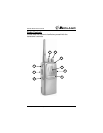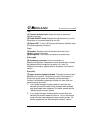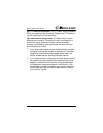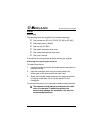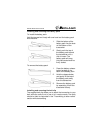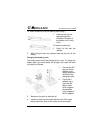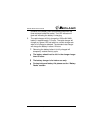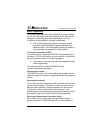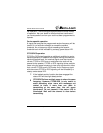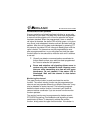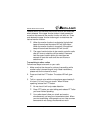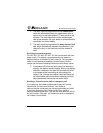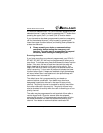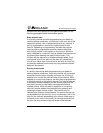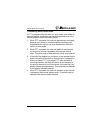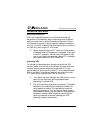
SP-400 Series User’s Guide
call operation. The following paragraphs describe these modes
of operation. Ask your dealer or communications coordinator if
you have questions on how your radio has been programmed to
operate.
Carrier squelch operation
A signal that matches the programmed receive frequency will be
heard if it is of sufficient strength to exceed the squelch
threshold. An on frequency signal exceeding the squelch
threshold level will be indicated by a steady green status LED.
CTCSS/DCS operation
CTCSS or DCS signaling adds an additional condition to carrier
squelch operation. In addition to the signal having to exceed the
squelch threshold level, the received signal must also have the
correct CTCSS or DCS tone or code before the audio will be
passed to the speaker. CTCSS or DCS signaling allows multiple
users using the same frequency to hear only signals which have
their correct CTCSS tone or DCS code. An on frequency signal
with the correct CTCSS or DCS signaling will be indicated by a
steady amber status LED.
If the latched monitor function has been engaged the
status LED will also light steady amber.
! CTCSS/DCS allows multiple users to share the same
frequency. However CTCSS/DCS is only useful to
avoid disturbing other users with messages not
related to them. If more than one radio is
transmitting at the same time, this will cause
interference. Do not transmit if the status LED is
illuminated. Wait until the channel is clear before
transmitting.
© 2005, Midland Radio Corporation 17



